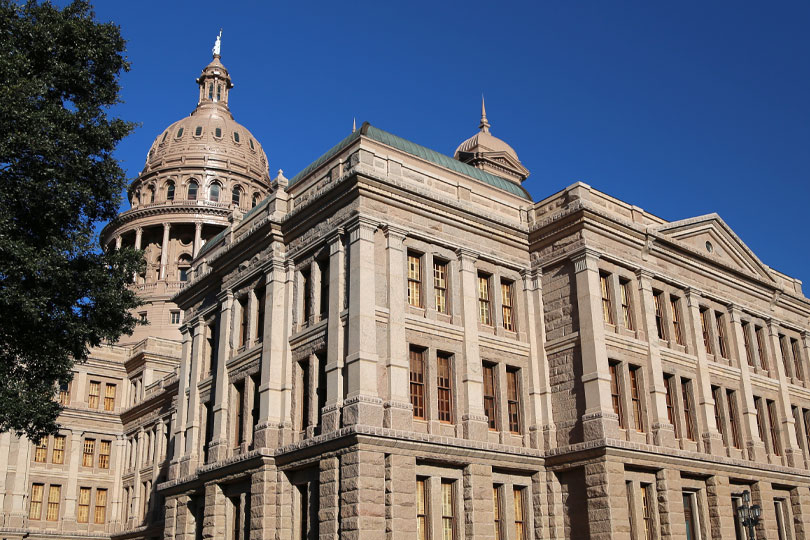By Julie Tomascik
Editor
Legislation to slash Texans’ property taxes is headed to Gov. Greg Abbott’s desk for his signature.
The $18 billion property tax relief package, which must be approved by voters in November, would be the largest in Texas history.
The House and Senate adjourned sine die on July 13, ending the second special session called by Abbott to reach an agreement on property tax relief.
Three bills make up the package: SB 2, property tax cuts; SB 3, the franchise tax relief bill; and HJR 2; a constitutional amendment required to authorize the tax cuts.
“These pieces of legislation have a lot of moving parts that will benefit Texas farmers, ranchers, rural landowners and millions of other Texans,” Joy Davis, TFB associate legislative director, said.
The funding for the relief package comes from the $34 billion budget surplus gained since the last legislative session.
SB 2
SB 2 is the centerpiece of the package. It lowers the school property tax rate for all homeowners and business properties.
“It provides a $100,000 homestead exemption on your school taxes. Now, that’ll be up from the current $40,000 homestead exemption,” Davis said.
It also provides $7 billion in a tax rate compression, which is where the state pays a larger portion of the school budget, and that should cut the school tax rates for everyone, Davis added.
SB 2 prohibits a school district, city or county from repealing or reducing an optional percentage homestead exemption that was granted for the 2022 tax year. That prohibition expires Dec. 31, 2027.
The bill also provides a temporary 20% circuit breaker, also referred to as an appraisal cap, for properties valued at $5 million or lower that aren’t considered homesteads, such as second homes, rental houses, vacation properties and commercial retail or business properties.
“That is a three-year pilot project so that the Legislature can see just how that works,” Davis said.
Also included in the language is expanding the appraisal district board of directors by three to nine total directors. Five would be appointed by the taxing units, three leected by majority vote at the general election within the county and the county assessor-collector would serve in an ex officio capacity. That increase applies only to counties with a population greater than 75,000.
“The central appraisal district board will be the ones selecting the appraisal review board members that you go in and protest your property taxes to,” Davis said.
All other counties under 75,000 in population will continue to have members appointed to the appraisal review board by the local administrative judge.
The property tax cuts won’t affect school’s revenue, Davis noted.
“School districts will be held harmless on this, which means any revenue that they lose to any of these changes, the state will make up the difference in that. So, it shouldn’t affect your local school districts,” she said.
SB 3
The second piece of the property tax relief is SB 3, which covers the franchise tax exemption. This legislation increases the no-tax-due threshold for a franchise tax from $1 million to $2.47 million in total revenue.
“They’re saying that this should help 67,000 Texas businesses to keep them from paying franchise tax anymore,” Davis said. “It also eliminates the no-tax-due report, which many see as a nuisance tax on those that are covered by the franchise tax.”
HJR 2
HJR 2 is the constitutional amendment that puts the property tax relief package before voters on the November ballot.
Additional constitutional amendments
The property tax relief package is just one of the more than a dozen constitutional amendments that will be on the ballot this fall, including broadband services and the right to farm and ranch.
“It will be extremely important for farmers, ranchers and rural Texans to get out and vote on these amendments this fall,” Davis said.


Property tax should be illegal, you never OWN anything. Even after you paid off your loan they keep charging property tax. I own a commercial building which in one year my property tax went from 1600 to over 7500 dollars. This is total highway robbery. I contacted my representative and he told me that was ridiculous and he would check into it. About 2 weeks he called me back [first time I ever got a phone call from a representive] that he was wrong and they could do it. Hopefully this will help some in the long run.
Appreciate the tax relief
Do I remember the state lottery was intended to fund schools? How much money does the lottery provide and how is it spent?
That is great, and I’m going to spread the news to my Ranchers and farmers friends and to make sure and vote. What what is really need to be done is just abolish the Appraisal District and do away with property taxes and go to sales tax which I think will bring more tax money And will help the low and middle-class family tremendously
Thank God I luce to see the day that Texas has lower property tax, it should not have taken this long!!!
Senior citizens and disabled people should not have to pay property tax, period!!
It’s about time! Appraisal districts are taxing us out of our homes! Seniors can’t afford these hikes. Young people can’t afford these hikes in values. Housing has become so unaffordable and then the city/county/state and school districts take so much on top of the housing cost. Some relief is definitely due. The problem is, the County will find ways to maximize the tax burden still.
Totally agree to do away with all appraisal districts use sales tax instead!